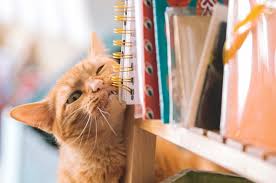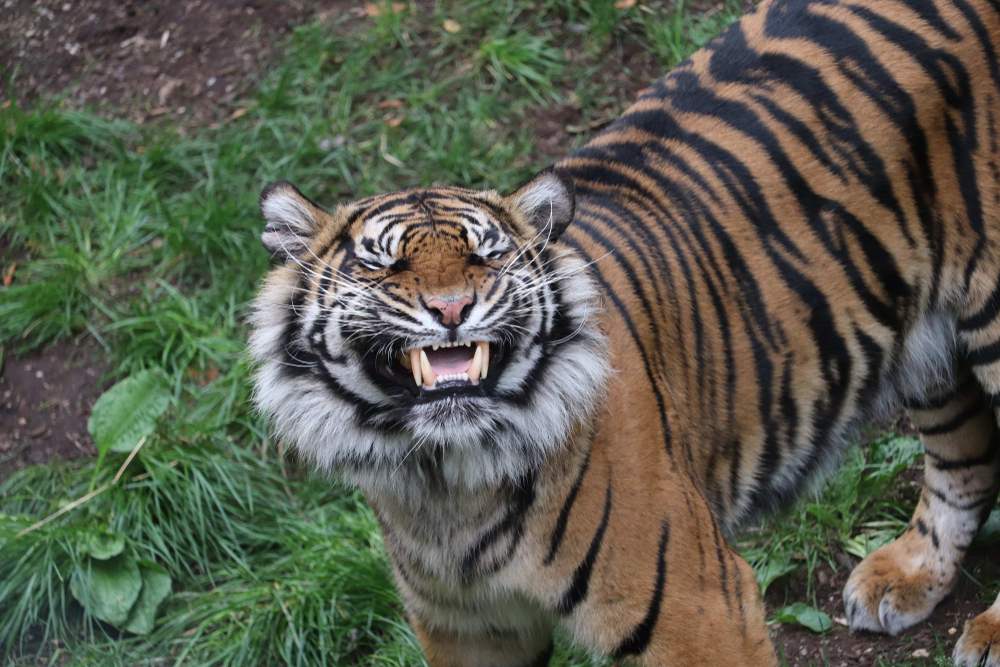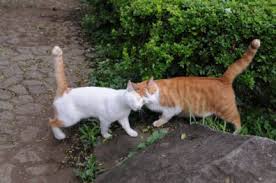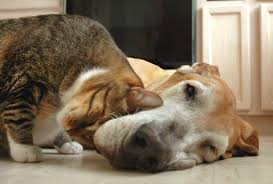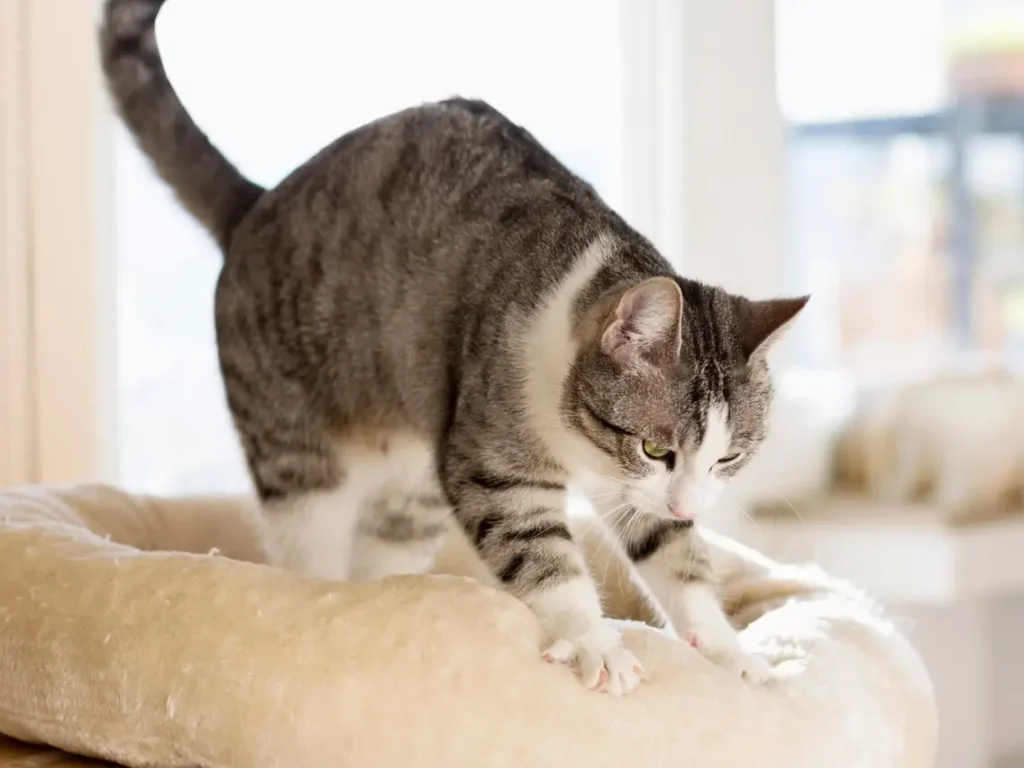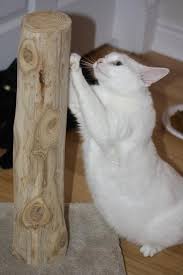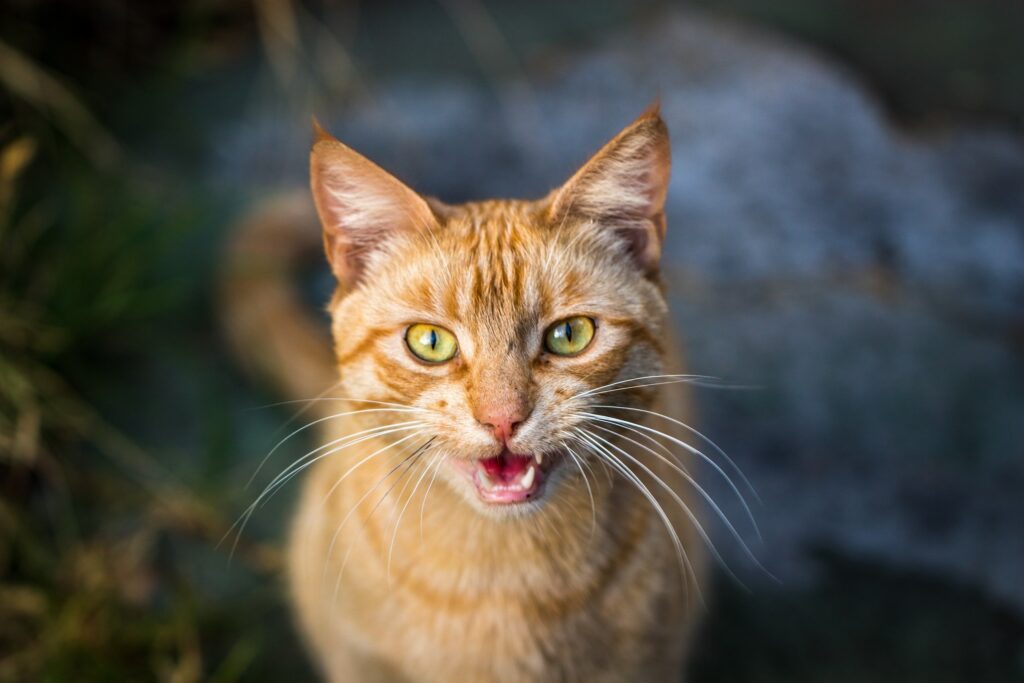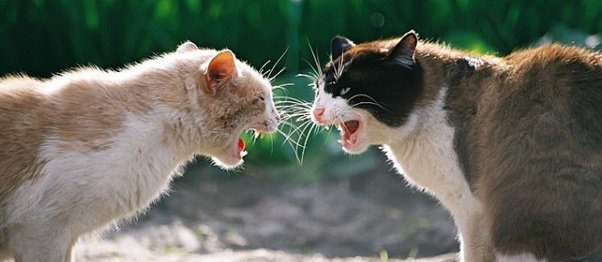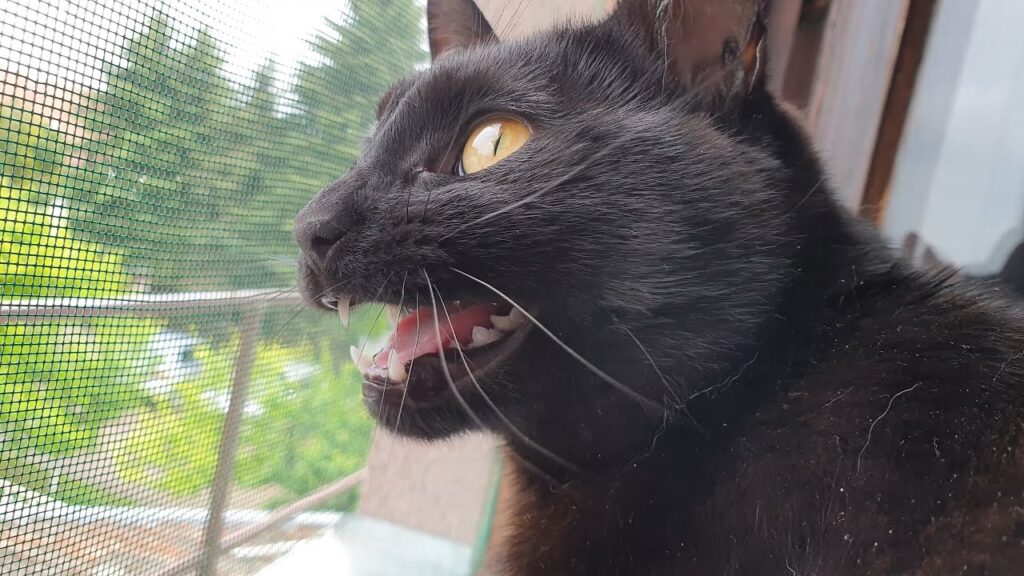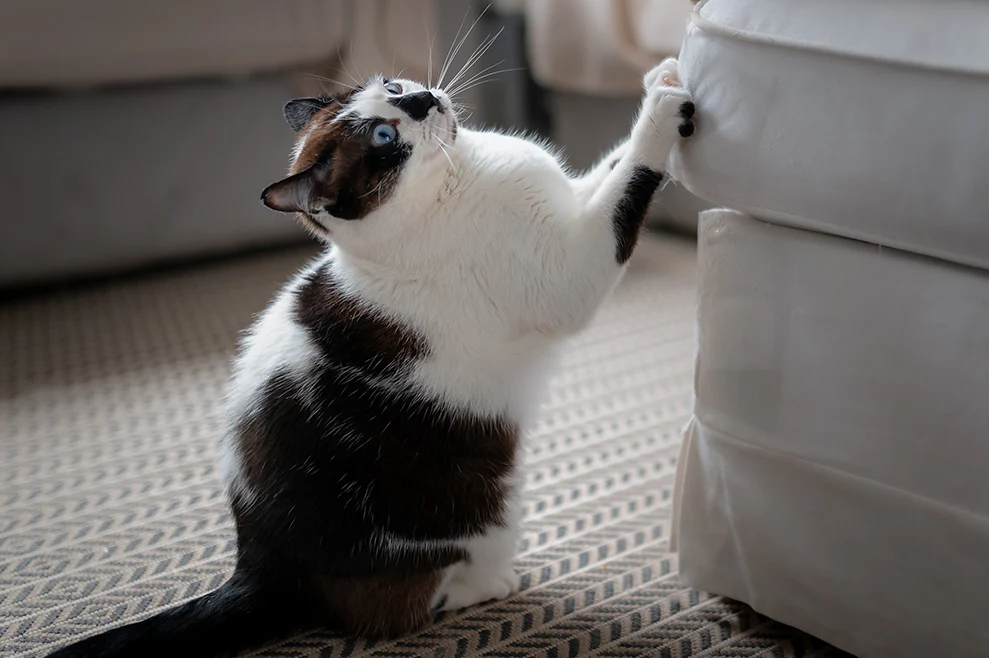
Many cat owners are mystified at how to get this destructive behavior to stop. First off, keep in mind your cat is not scratching your couch to punish you or get back at you. Cats can scratch for a number of reasons. Stress is one of them. Loud noises or too much change in their environment such as a move or remodel. It is important to shield your pet from too much environmental stress. While stress can cause furniture scratching, there may be another reason your cat is shredding your couch; love. Your friend may be scratching to mark her space with scent and as a visual marker. They have scent glands in their feet and they use this to let others know this is their home and territory. They do furniture, especially couches and chairs, because you, their person, sits there and they want to claim you as their own. While this is sweet and loving of them, it is still annoying to us.
Here a a few ideas to help.
Scratchers
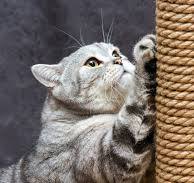
Cats need to scratch it not only marks their territory it also helps them to stretch, get exercise, and shed old claw sheaths. It may take some trial and error on your part, but finding a preferred material for your cat can help. There is a lot of variety out there from cardboard, to carpet, to sisal, and rope. Keep in mind too that some prefer vertical surfaces while others may prefer horizontal. There are even scratchers out there these days that attach right onto your couch. One way to stop furniture scratching, is to put a cat scratcher right by the marked furniture. This gives them an alternative that you can both live with. You can then reinforce scratching on the appropriate surface with treats, petting, play, or anything that your cat enjoys. Cats should never be punished for scratching as this is a natural instinctive behavior that they need to do for wellbeing. You can also use things on the couch that they don’t prefer, temporarily, like double sided tape, to encourage going to the scratcher instead.
Hiding spots
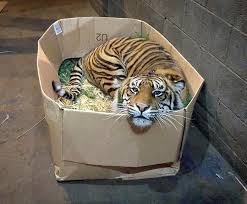
Cats need places to hide. Keep in mind that just because your house is safe for your feline friend that doesn’t take away that her mentality is that of a prey animal. Cats feel safer if they have a, or even a few places they can hide or get away from stressors. Hiding spots can be anything from tent covered pillow beds, to a cardboard box with a blanket in it (we all know how much cats love their cardboard boxes!)
Here is a quick reference guide for your cat:
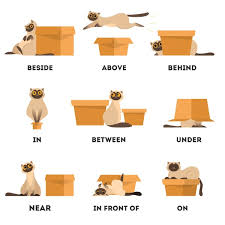
Vertical Space
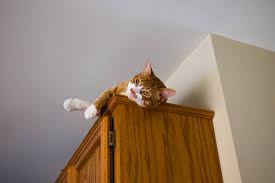
Cats love to get up high, it is generally their first go to for escape. Providing places your kitty can get up high can help reduce his stress and give him a place to watch the goings on in his territory from a comfortable place. Again, there are a lot of ways to achieve this from elaborate cat trees (look at this one, just for fun), to tops of bookshelves, to cat wall furniture.
Play
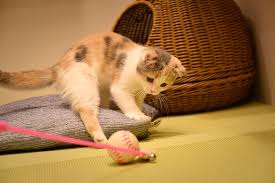
Cats do better if they have a chance to get some exercise and spend time having fun with you. They also get mental stimulation from play and get to use their hunting instincts. Using wand toys or a laser are good options for helping kitty get some energy out. Keep in mind, you need to let your kitty catch their “prey” now and then during prey or you can actually cause more stress. While playing with a laser, you can have the laser land on a favorite toy or even a treat. A good time to plan play for your cat is right before a meal. This follows the natural pattern of hunt and then eat.
There are more things you can add in to help. Simply reducing the stress in the environment such as keeping things a bit quieter, or putting away a scary object, such as that giant stuffed animal dog. (Yes I have one of these for teaching CPR. It scares us all in the dark!) You can also consider other ways to help enrich your cat’s life, such as a bird feeder in a window for them to watch. Do a bit of fun experimenting to figure out how to make your home an enriching and comfortable place for your feline and you will both benefit.

